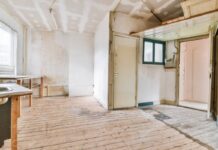Gladstone has been hit hard, it’s scraped the bottom of the property market, but confidence is slowly peeking through.
What is the current, and projected, state of the Gladstone property market?
As per projections we delivered in 2019 (see text below) Gladstone has continued along the path of improvement, despite the nightmare that was 2020. Here we saw the ‘attractive’ factor come into investment decisions as would-be purchasers looked outside of the metropolitan borders for the greener pastures that lay ‘out west… somewhere’.
In the 2019/20 there was an increase of 14% on the prior year (just after our original reporting period). House and land packages appear to be the most prominent investment packages. There is some fluctuation here but, generally speaking, this fits the trajectory that we originally reported upon.
This median house value rise can be directly attributed to the newly constructed dwellings under the umbrella of the ‘house and land package’ spoken about previously. There are new precincts and a fluctuating population in Gladstone for a variety of reasons but growth seems steady with the average and to be expected peaks and troughs.
Rental vacancy is dialling right down in the area which is tightening the options for some renters as they are seeing themselves with fewer and fewer options. For those in transient communities like FIFO or associated trades, this has meant putting down roots and actually investing in Gladstone instead of renting.
This reduction in rental properties being available means that there is, obviously, a greater margin for rental properties to increase in weekly prices which, again, means that some Gladstone residents will be on the back foot.
Overall? Things are looking promising for the area but this is obviously a space to watch.
2019/2019 projections are as below
At the time of writing, Gladstone is on a slow up rise. While investors are still struggling with the massive drop in the value of their homes, the recovery phase is providing a glimmer of hope with vacancy rates dropping to their lowest since March 2015 at 4.9%. There’s even projection that vacancy rates could drop to around 3% mid 2019. Market confidence is building, albeit slowly.
The Herron Todd White national property report provides promise, quoting that, “The market is on the rise and there is light at the end of the tunnel,” for owners who purchased during the last boom but owe more than their house is worth. Real Estate Institute of Queensland CEO Antonia Mercorella confirmed that Gladstone was starting to return to a “new normal”. Ms Mercorella explained that the accelerated growth that was experienced back during the mining boom is when things really started to go crazy and now she’s realistic about the Gladstone property market. “There will be people who purchased in that market, and they will be feeling the pain. There is no denying that, but also we have to understand that, that was realistically not a sustainable thing, so what we really are seeing is a stabilisation of the market,” she said.
Stabilisation has already been seen in some Gladstone suburbs with the median house price increasing by 17 per cent in Benaraby and 10.5 per cent in Kirkwood. However, as history depicts, Gladstone’s housing market is at the mercy of industry. Do your due diligence and monitor what’s happening and whether or not it’s sustainable.
Industry in Gladstone
Without its mining, some feel that Gladstone is just a town stuck in the middle of the coast, but, there’s more going for it that people may think. Not only is it at the southern end of the Great Barrier Reef with a thriving seafood industry and access to idyllic islands like Herron and Curtis Islands, but Gladstone is also seen as the ‘engine room’ of industry. The Port of Gladstone is the fifth largest multi-commodity port in Australia, the largest in Queensland and is the world’s fourth largest coal exporting terminal. The port also sees cruise ships at the port as part of its strong tourism industry.
With a 22,000 hectare Gladstone State Development Area, Gladstone has development potential. This area offers sites ready for development, established infrastructure and possibilities for economic growth. In addition to the Port of Gladstone, the city is home to industry including Queensland Alumina refinery, Rio Tinto Alcan Yarwun refinery, Boyne Smelters, Cement Australia, Orica Australia chlor-alkali plant, NRG Gladstone Power Station, Gladstone Water Board and Queensland Energy Resources, with new industry on the way including a $1B coal gasification project proposed by Australia Future Energy.
The mining rush may be long gone, but employment opportunities in Gladstone haven’t disappeared thanks to industry. However, with industry comes environmental impact. If you’re not one for environmental noise and air pollution no matter how cheap the property, your best bet might be to live in the Gladstone suburbs away from the industrial areas, rural is your best bet.
The Queensland Government monitor Gladstone region air quality, water quality and marine health with Gladstone being one of the most tested waterways in Australia. There is a network of air monitoring stations in Gladstone to test ambient air quality for pollutants. Although this monitoring occurs, you will still smell industry in the air in various suburbs and different weather. You can see hourly air data here.
People and employment in Gladstone
Investing in Gladstone property means keeping an eye on population and employment. More people and more people in work means lower vacancy rates which push up housing demand and bolster the market.
Population Australia’s data shows that Gladstone has had an average and consistent growth rate of 0.81% over the last seven years since 2011, adding around 229 to 329 people each year to the overall population. The population is expected to reach 34,215 by the end of June 2019. One of the reasons the growth rate is steady is employment rates.
Launches like the new biorefinery set to bring $1Billion into Gladstone’s industry, are likely to increase population and employment figures further. The Opposition Leader, Bill Shorten, announced that Labor wants Gladstone to be a hydrogen hub and that, “Our policy today is about jobs, jobs, jobs, secure jobs in Gladstone.’ This can only be a good thing for the property market and the employment rate which has been hovering around 7.8 to 8% since 2017.
According to census, the main occupations and industries of people living in the Gladstone area closely reflect the industry in the region. Technicians and Trades Workers make up 21.5%, Professionals 14.6%, Labourers 12.4%, Machinery Operators and Drivers 11.8%, and Clerical and Administrative Workers 11.1%.
The main industries people from Gladstone work in are 6.6% worked in Alumina Production. Other major industries of employment included Supermarket and Grocery Stores 3.2%, Engineering Design and Engineering Consulting Services 3.2%, Other Heavy and Civil Engineering Construction 2.7% and Primary Education 2.6%.
What’s to love about Gladstone
• It’s the gateway to the Southern Great Barrier Reef
• Auckland Point Lookout
• Curtis Island
• Herron Island
• Gladstone Aquatic Center
• East Shores Precinct
• Gladstone Maritime Museum
• NRG Gladstone Power Station Industry Tour
• HMAS Gladstone
• Tandoon Botanic Gardens
• Explore the Gladstone Hinterland
• Calliope River Historical Village
• Take a 1.5 hour drive to 1770 and Agnes Water for Queensland’s most northerly surf beach, golden beaches and aquamarine waters.
With price growth in some areas and good rental rates, it’s not surprising to see buyer confidence picking up, but it will take patience, research and risk to invest in this city.





